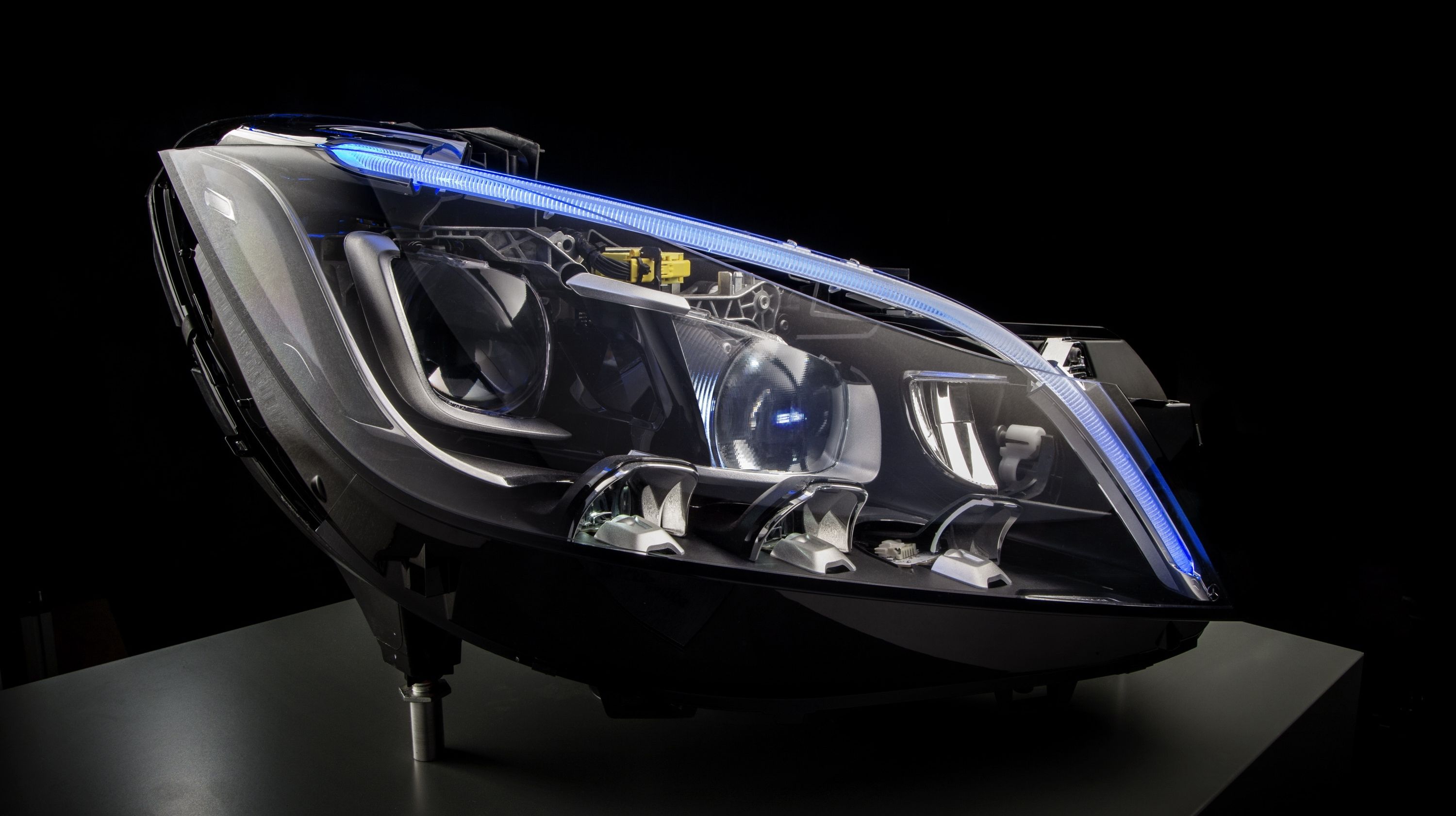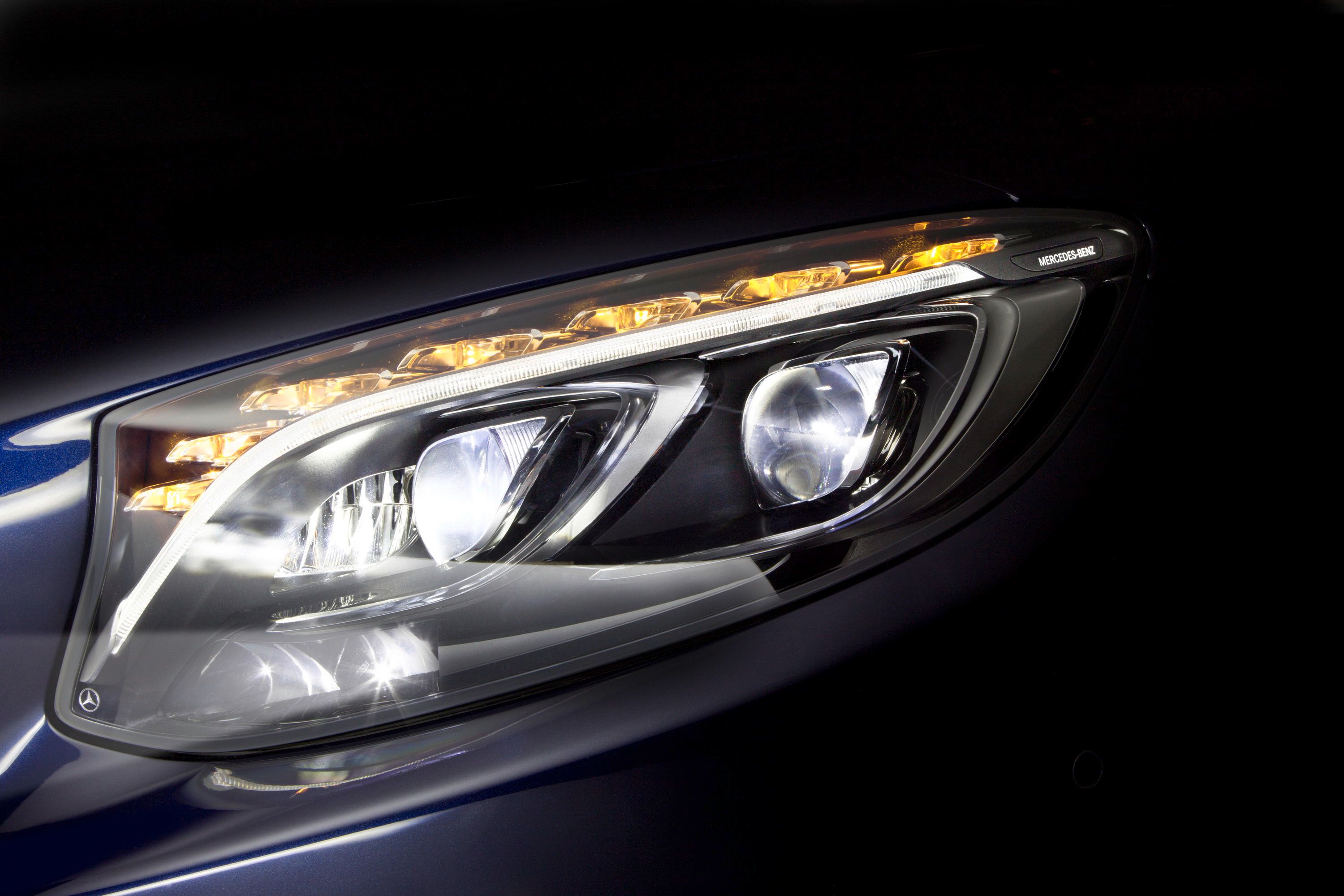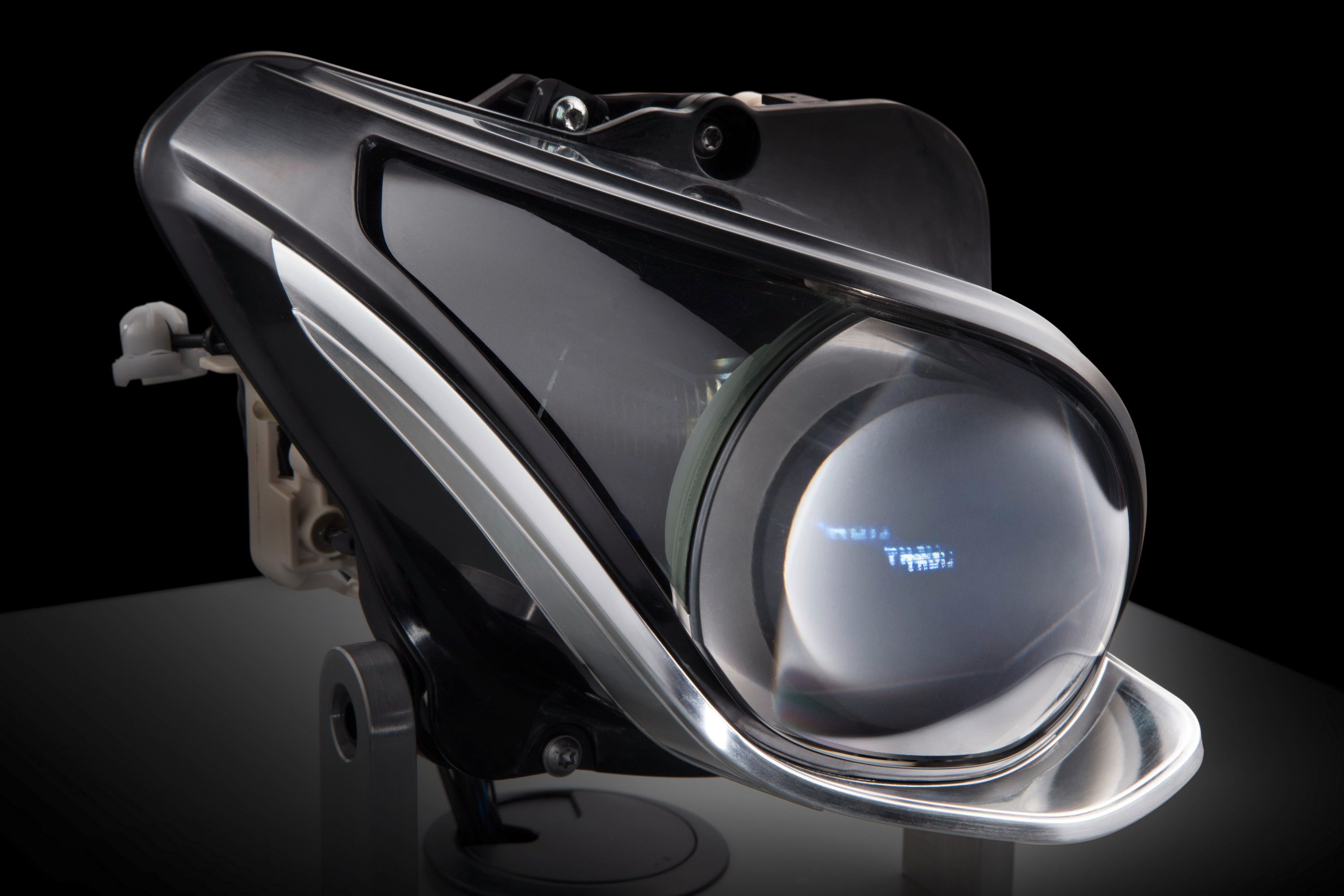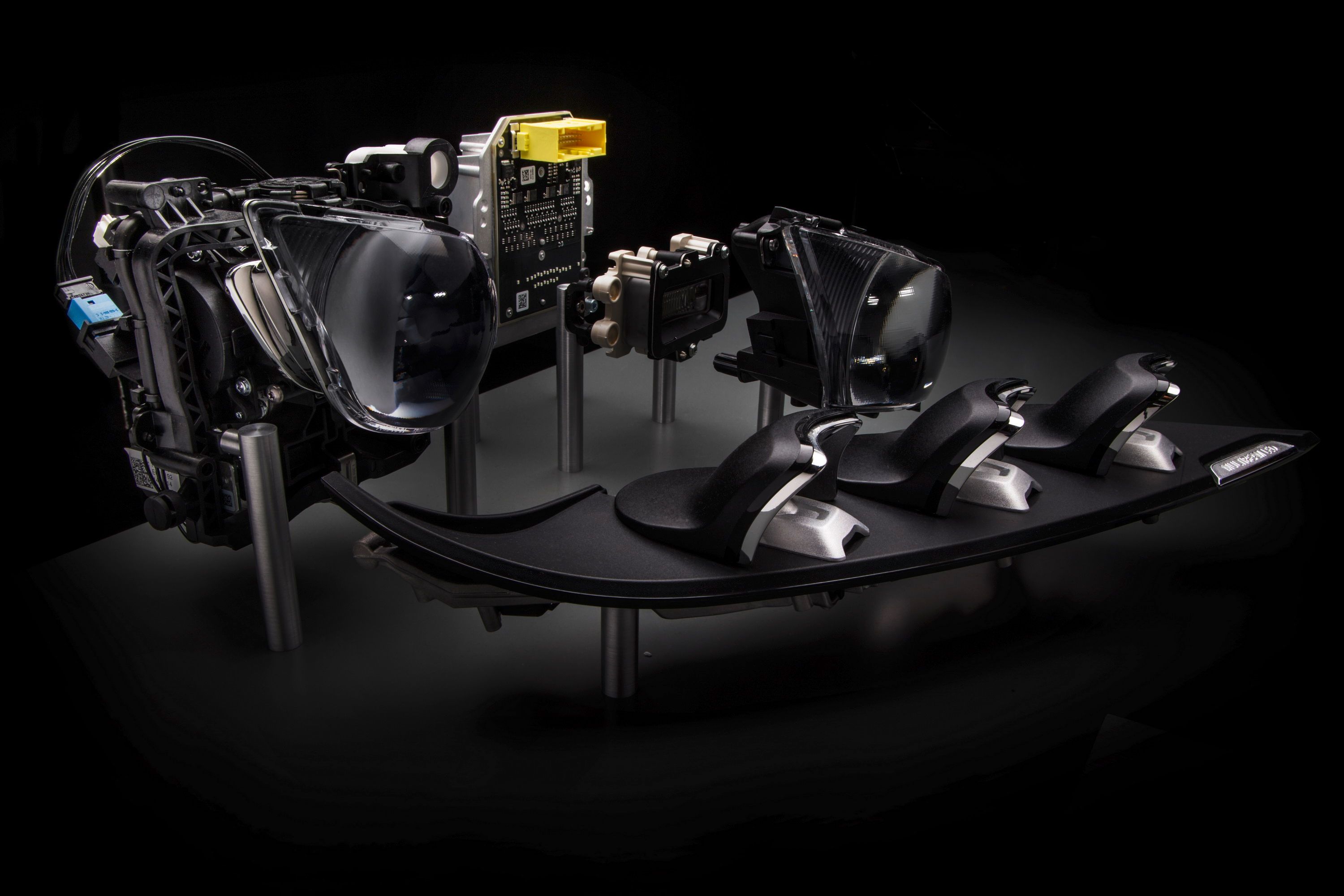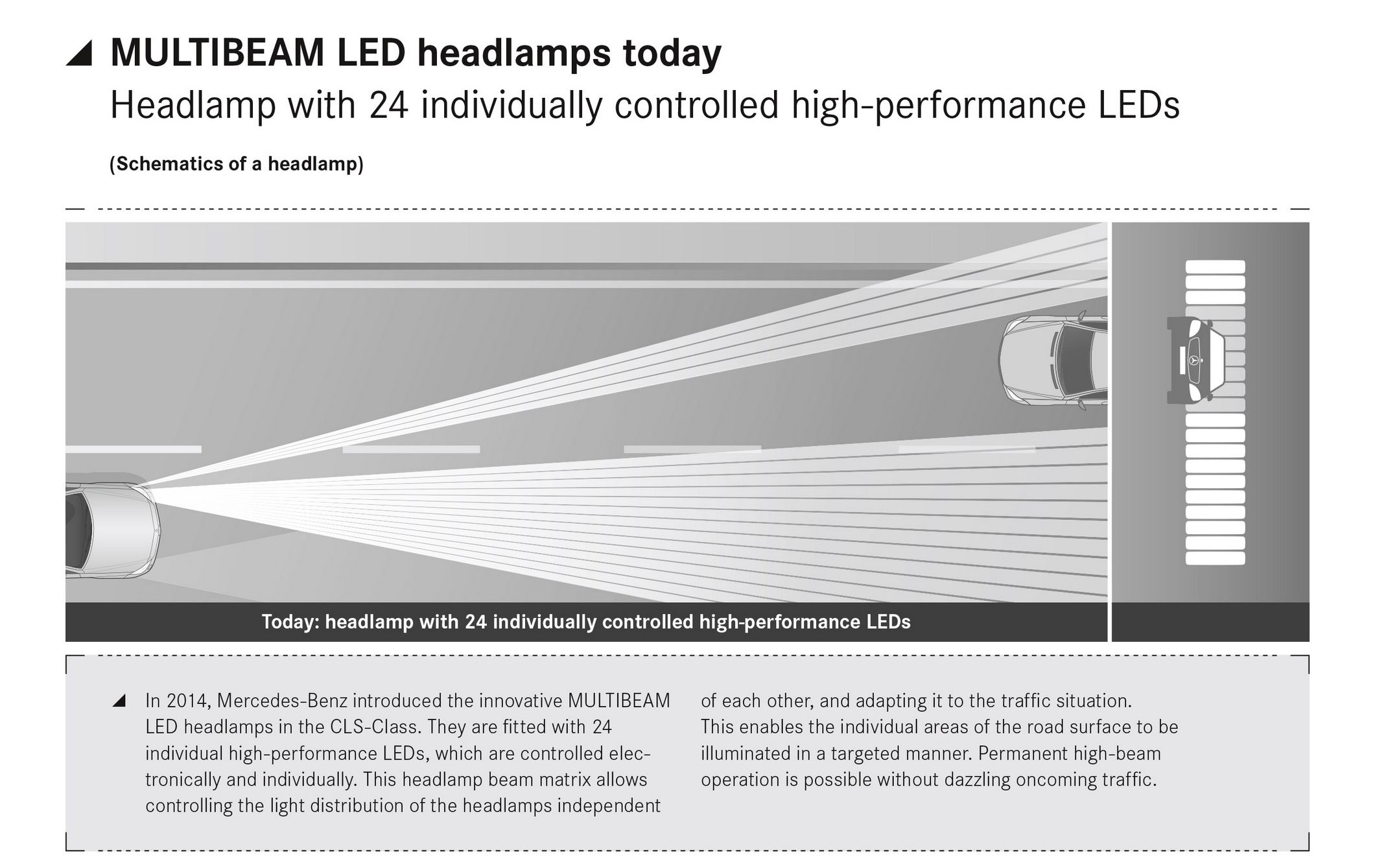The 2015 Mercedes-Benz CLS-Class arrived in June 2014 packing a host of innovative features, none arguably more impressive than Mercedes’ new MULTIBEAM LED headlights. The highly advanced lighting technology is made up of 24 individual high-performance LEDs, each individually controlled to adapt to certain traffic conditions. The “gridded” light source creates a customized light distribution from both headlights and distributes it across the road to keep optimal lighting in any driving condition for both the driver and other drivers.
Such a technology->ke1701 can be filed under “revolutionary,” but Mercedes->ke187 isn’t just stopping there. Soon enough, the German automaker plans to introduce MULTIBEAM LED headlights that will be made up of of 84 individual LEDs. This setup not only creates higher resolution of the light output, but it also improves illumination for the driver and provides increased safety for other drivers on the road, especially those in the oncoming lane who will be protected from getting blinded by the Merc’s high beams.
The company thinks highly enough of this new technology that it can actually picture a scenario where its Intelligent Light System can be controlled digitally without the aid of mechanical actuators doing the heavy lifting.
All this points to how far technological advancements in automotive lighting have come for Mercedes and by extension, its two German rivals. BMW,->ke178 has its laser lights->ke178 Audi->ke14 has its Matrix LEDs and now, Mercedes has its MULTIBEAM LEDs. Let the headlight-technology race begin.
Click past the jump to read more about the new Mercedes LED Headlights.
Mercedes LED Headlights Explained
The MULTIBEAM LED headlamps on the 2015 Mercedes CLS-Class have given birth to a host of incredible lighting innovations, including dazzle-free high-beam headlamps that can systematically illuminates or darkens any part of the road to avoid distracting any driver traveling ahead of it. As soon as there isn’t a car in front of the CLS, the LED lights automatically revert back to full high beam. The same system applies when an oncoming vehicle from the opposite lane approaches the car.
The Predictive Active Bending Light is another unique advancement of the MULTIBEAM LED headlamps. As its name suggests, the headlamps’ beam is capable of bending based on the direction of the road, even before the driver has turned the wheel. This dramatically improves driver safety when entering and exiting bends.
Then there’s the Roundabout light, which activates before entering a roundabout. Using the CLS-Class’ own navigation system, the light beam is widened on both headlamps, ensuring a bright and clear view of any roundabout and whether other cars might be using it at the same time.
Once the system recognizes that the car is driving on the highway, the Motorway high beam is activated, automatically dimming the the offside area of the light beam so as not to dazzle oncoming trucks in the opposite lane. The system does that while keeping the driver’s view fully illuminated.
Why it matters
Ambitious as all of this may sound, Mercedes even sees a future where 1,024 pixels could be used on its MULTIBEAM LED headlamps, creating even more improvements in night-time visibility for its cars and other road users.
The company is currently developing said technology with partners Infineon, Osram, Fraunhofer Gesellschaft IZM, and Hella as part of the "µAFS" research project. The project, according to Mercedes, has already given birth to a new type of LED chip that allows selective control of “more than” 1,024 individually addressable pixels per LED chip.
The technology is admittedly flying over my head right now, but I do understand the whole purpose behind Mercedes’ pursuit for lighting innovation on its models.
Fortunately, we’ll get to see what Mercedes engineers have been working on soon enough; the new lighting technology is expected to be installed and tested on an experimental model sometime next year.
Videos

